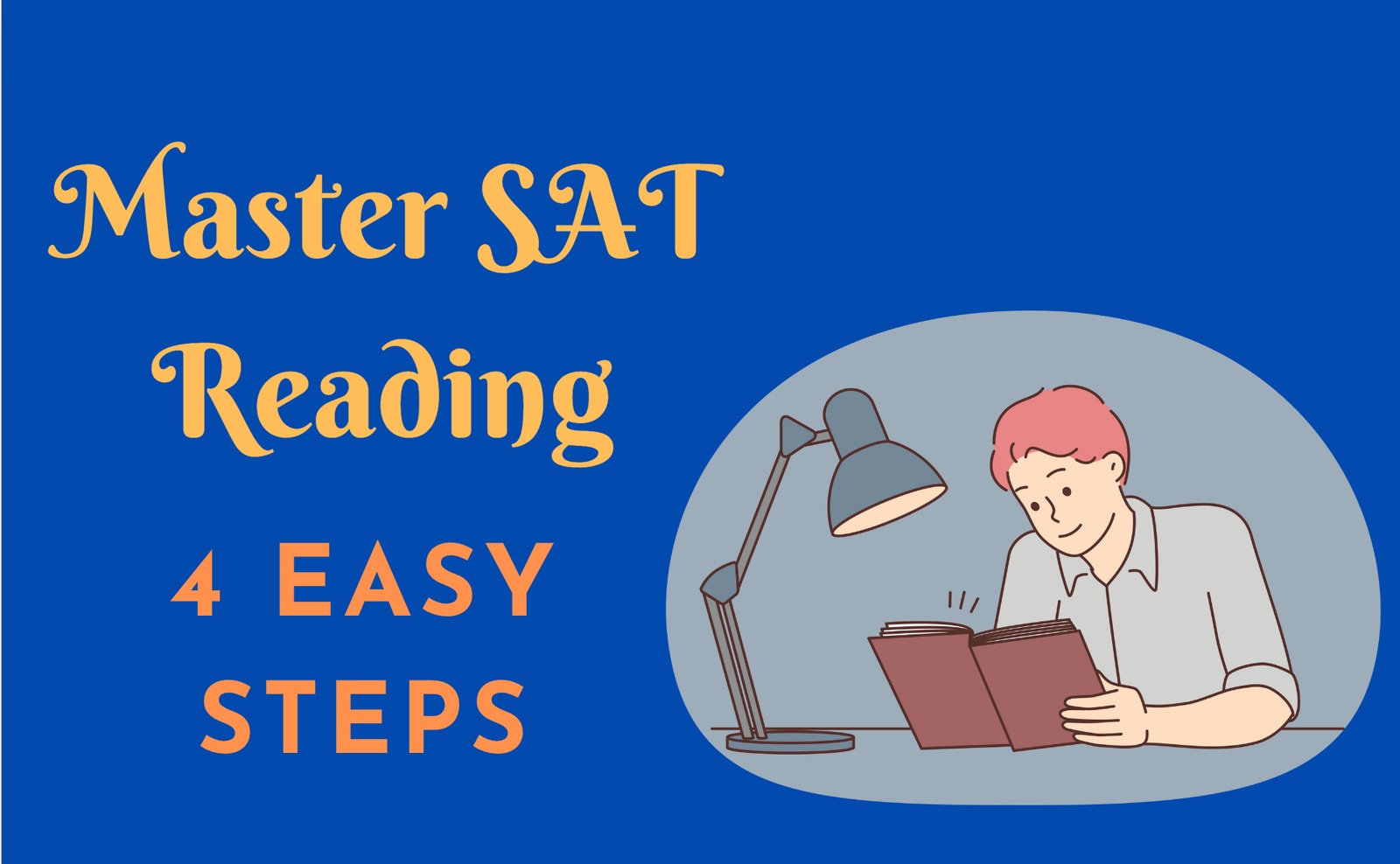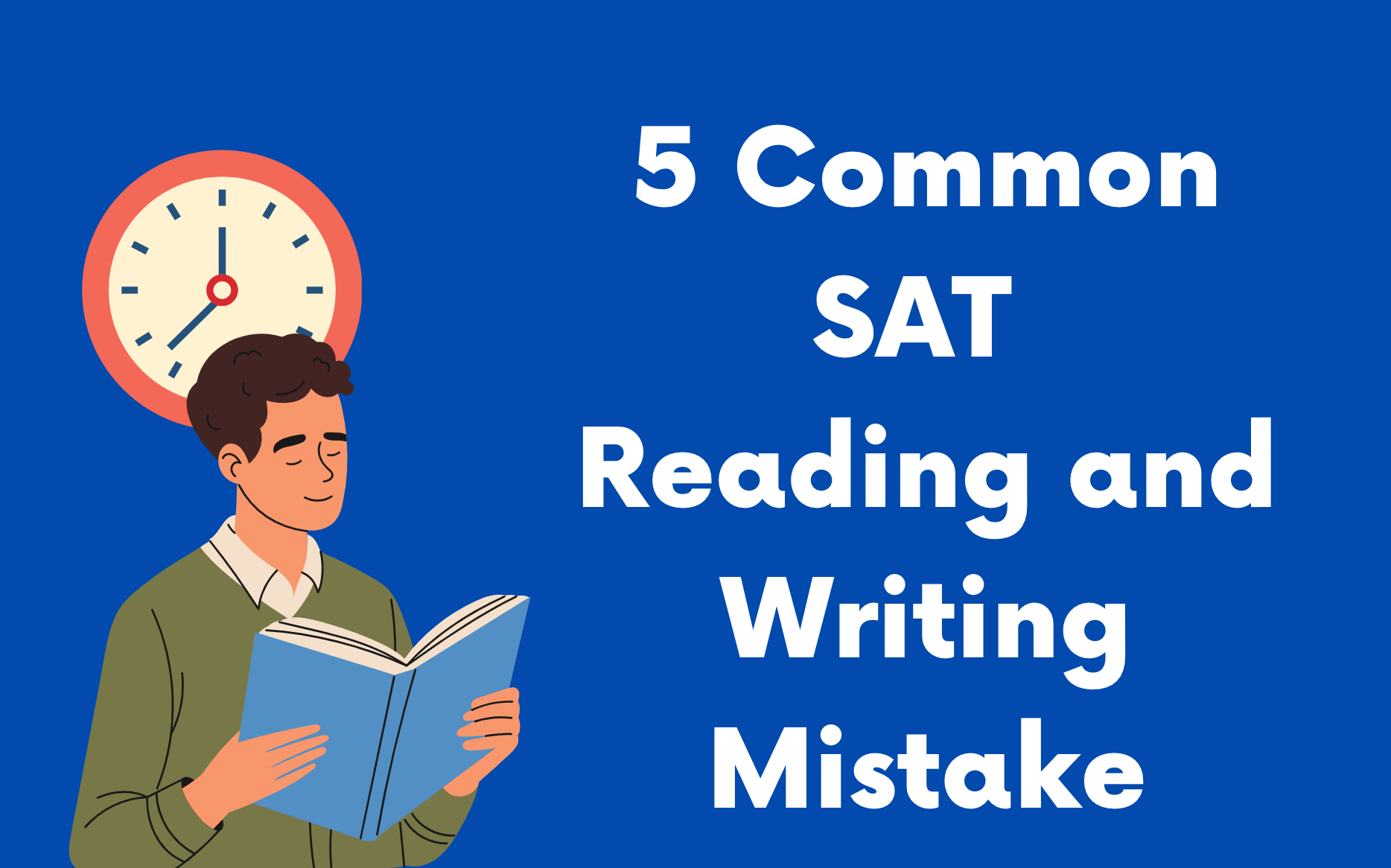SAT Reading Made Easy: 4 Steps to Better Comprehension
Author
Phoenix Wilder
Date Published

When tackling the SAT Reading and Writing section, you’re presented with a unique challenge. With the introduction of the digital SAT, this portion of the exam includes over 50 passages that you'll need to read carefully and answer questions on. These passages span various topics and require skills in critical reading, grammar, and analytical thinking.
So, how do you approach this challenge strategically to ensure a strong score? This guide explains the structure of SAT passages and explores effective strategies for handling them.
What Are SAT Passages Like?
In the official digital SAT, the Reading and Writing section includes 55 passages, each paired with one question (plus one special question that requires comparing two passages). You’ll face this task within just 64 minutes, split into two modules of 32 minutes each, each containing 27 questions.
Thankfully, the passages in the digital SAT are significantly shorter than those in older versions of the test. These range from 25 to 150 words but are often just as (if not more) challenging, as they demand high-level comprehension within brief texts.
As in previous SAT formats, these passages draw from various fields such as literature, history, social studies, humanities, and science. Notably, there’s now a greater emphasis on humanities-based questions, with some even derived from poetry—usually works from the early 20th century or prior.
The questions in the Reading and Writing section fall into four main categories, testing distinct skills:
Information and Ideas (12–14 questions)
Focuses on understanding main ideas, identifying evidence, interpreting texts, and answering inference-based questions. Some questions may also involve analyzing tables or infographics.
Craft and Structure (13–15 questions)
Challenges your ability to interpret word meanings, evaluate arguments, or connect ideas across passages (cross-text questions).
Expression of Ideas (8–12 questions)
Tests your ability to choose the best transitional words/phrases or organize ideas for clarity and purpose.
Standard English Conventions (11–15 questions)
Measures your understanding of grammar, sentence structure, and conventions.
Each of these categories includes specific question types, which we’ll discuss in more detail next.
The Types of SAT Reading and Writing Questions
The SAT breaks its 11 total question types into four skill areas, each assessing your ability to analyze passages differently. Here’s a breakdown of each question type:
Information and Ideas Questions
Command of Evidence (Textual): Identify which part of the passage provides the strongest support for a claim.
Command of Evidence (Quantitative): Use charts or tables to complete related sentences.
Central Ideas and Details: Determine the main idea of the passage or answer a specific fact-based question.
Inferences: Select the answer that completes an incomplete idea in the passage most logically.
Craft and Structure Questions
Words in Context: Choose the most precise or logical word/phrase for a specific context.
Text Structure and Purpose: Identify the author’s purpose or how the passage is structured.
Cross-Text Connections: Involve comparing two passages on the same topic, analyzing their perspectives or arguments.
Expression of Ideas Questions
Transitions: Pick the most logical word or phrase to connect ideas clearly.
Rhetorical Synthesis: Use notes or summaries effectively to select the answer that best meets a particular rhetorical goal.
Standard English Conventions Questions
Boundaries: Determine proper sentence structure, ensuring clauses, phrases, and punctuation align with grammar rules.
Form, Structure, and Sense: Apply the rules of parts of speech (e.g., nouns, verbs) to complete sentences properly.
With these categories in mind, let’s explore the 4-step method you can use for every passage to maximize your success.
A 4-Step Method for Tackling SAT Reading and Writing Passages
Step 1: Decide Whether to Start With the Passage or Question
To start, you’ll need to figure out your strategy: do you read the passage first or the question? Some students prefer to thoroughly read the passage before moving on to the question, while others choose to read the question first to guide their focus as they skim through the passage. Another common method involves quickly scanning the passage for key points, reviewing the question, and then revisiting the passage in more detail. What matters isn't which method is "right," but which method works best for you.
For instance, some test-takers may choose to glance over the passage’s main points or introductory details to grasp the topic before tackling the answer choices. Others may prefer reviewing the answer choices first to know what to pay attention to in the passage. Deciding on the most effective approach requires practice—lots of it. Taking full-length practice SAT tests is a fantastic way to test out different tactics and discover which one feels most comfortable and productive for you. In fact, you might even find it helpful to adjust your strategy based on the type of question or passage at hand. For example, shorter passages might be easier to read in full before answering, while longer ones may benefit from scanning for key points or starting with answer choices to guide your reading.
Step 2: Fully Understand What the Question Is Asking
Whether you read the question first or after the passage, clarity on what’s being asked is critical. The SAT is notorious for tricky phrasing designed to confuse test-takers.
Pay particular attention to keywords such as “NOT,” “EXCEPT,” or “ONLY,” as they can completely reverse the meaning of the question. A common trap is selecting an answer that seems plausible but doesn’t actually meet the question's criteria. Taking a moment to ensure you truly understand the question can help you avoid costly errors.
Step 3: Hone in on Key Information in the Passage
As you read the passage, focus on identifying critical details quickly. Most passages include an introductory note with valuable context, such as the author, publication date, or subject matter. Don’t skip this information—it often provides clues about the passage’s purpose.
Additionally:
- Highlight transitions (e.g., “however,” “despite,” “additionally”) to identify shifts in arguments or key ideas.
- Pay special attention in cross-text connections questions, where understanding the relationship between two passages—whether they agree, disagree, or build on each other—is essential.
When interpreting visual data (charts/tables), pinpoint the data trends directly linked to the question.
Step 4: Back Up Your Answer With Evidence
Never rely on gut feelings when selecting an answer. Instead, ensure your choice is backed by specific evidence from the passage. Even if a text feels familiar or relevant to real-world knowledge, your answer must be based solely on the passage’s content—not personal opinions or pre-existing knowledge.
If an answer seems “right,” ask yourself: Where in the passage is this supported? A reliable approach is ruling out options you can’t directly justify until only the best answer remains.
Additional Strategies for SAT Reading and Writing Success
1. Eliminate Wrong Answers
Incorrect answers on the SAT are intentionally tricky and might appear plausible at first glance. However, they often:
- Are too specific or too broad.
- Reverse relationships or present ideas not addressed in the passage.
- Use absolute words, like “always” or “never,” which are rarely correct.
Familiarizing yourself with these patterns will sharpen your ability to filter out distractions and identify the correct option.
2. Practice Data Analysis With ACT Science Questions
Since many SAT Reading questions involve charts, tables, or graphs, practicing ACT Science questions can boost your ability to interpret data. This practice can supplement your prep when you’ve run out of SAT-specific questions.
3. Master Common Literary Terms
Familiarity with concepts like tone, style, theme, and imagery enhances your ability to understand passages and analyze their components. Make sure to practice applying these terms within passages, not just memorizing their definitions.
Conclusion: Master Your Approach to SAT Reading
To succeed on the SAT Reading and Writing section, solid preparation and strategy are key. Follow this tried-and-true approach to each passage:
Decide whether to read the passage or question first.
Gain absolute clarity on what the question is asking.
Zero in on critical information in the text.
Support every choice with evidence from the passage.
With consistent practice and attention to detail, you’ll build the skills needed to confidently tackle this section and improve your performance.
Related Posts

Struggling with the Digital SAT Reading & Writing section? Discover 5 common mistakes students make and actionable tips to boost your score!

Discover proven strategies to score a perfect 800 on the SAT Reading and Writing sections. Learn essential skills and tips for test day success.